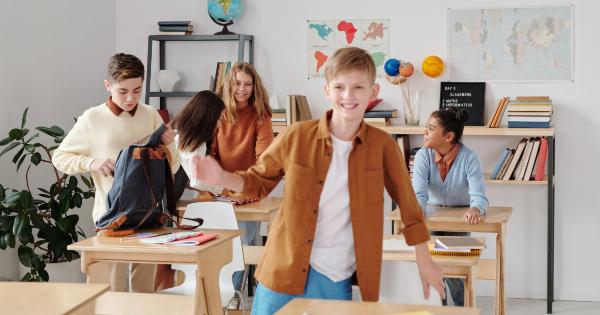Education is a fundamental right that every child deserves, regardless of their abilities or disabilities. However, not all children learn at the same pace or in the same way.
Some children may face difficulties in acquiring and processing information, which can hinder their academic performance. As educators and caregivers, it is essential to provide proper support to help these children overcome their learning difficulties and reach their full potential.
In this article, we will explore various ways to support learning in children with difficulties.
1. Individualized Education Plans (IEPs)
Individualized Education Plans are tailor-made plans developed specifically for students with learning difficulties. These plans outline the student’s unique needs, goals, and the strategies and accommodations required to support their learning.
IEPs involve collaboration among teachers, parents, and special education professionals to create a comprehensive and personalized approach to education.
2. Assistive Technology
Assistive technology refers to devices or software designed to support children with learning difficulties. These tools can range from speech-to-text software and audiobooks to interactive learning apps and adaptive devices.
By using assistive technology, children can overcome barriers to learning and participate more actively in the educational process.
3. Multi-Sensory Learning Approaches
Some children with learning difficulties benefit from multi-sensory learning approaches. These approaches engage multiple senses simultaneously, reinforcing learning through auditory, visual, and tactile experiences.
For example, a teacher can use manipulatives, such as blocks or beads, to teach math concepts, allowing the child to touch and feel the numbers while hearing and seeing them.
4. Small Group Instruction
Small group instruction can be particularly beneficial for children with learning difficulties. Working in small groups allows for more personalized attention and a less overwhelming learning environment.
Teachers can provide targeted support, adapt teaching methods, and encourage peer collaboration, which enhances learning outcomes for these children.
5. Multi-Modal Teaching
Multi-modal teaching involves presenting information in multiple formats to cater to different learning styles and abilities.
For example, a teacher can use a combination of visual aids, auditory explanations, and hands-on activities to ensure that all students, including those with learning difficulties, can grasp and retain the information effectively.
6. Regular Progress Monitoring
Regular progress monitoring is crucial for tracking the academic growth of children with learning difficulties.
By closely monitoring their progress, educators can identify areas of improvement, modify instructional strategies, and provide timely interventions. Progress monitoring also helps in setting realistic goals and celebrating achievements, boosting the child’s motivation and self-esteem.
7. Peer Support and Collaboration
Encouraging peer support and collaboration fosters an inclusive and supportive learning environment. Pairing children with learning difficulties with more advanced peers can provide them with additional guidance and support.
Peer collaboration also promotes social interaction, empathy, and the sharing of ideas, creating a positive and enriching learning experience for all students involved.
8. Effective Communication with Parents
Collaboration with parents is essential for supporting children with learning difficulties. Regular communication with parents helps educators gain insights into the child’s strengths, challenges, and individual needs.
By involving parents in their child’s education and keeping them informed about progress and strategies, educators can ensure a consistent support system at both home and school.
9. Emotional Support and Building Resilience
Children with learning difficulties often face emotional challenges due to their struggles in the academic environment. Providing emotional support and building resilience are crucial aspects of their overall development.
Teachers and caregivers should create a safe and non-judgmental space, where children feel comfortable expressing their emotions and asking for help. Promoting a growth mindset and celebrating effort over outcomes helps children develop resilience and perseverance.
10. Professional Development for Teachers
Continuous professional development is vital for equipping teachers with the knowledge and skills required to support children with learning difficulties effectively.
Teacher training programs should incorporate strategies and best practices for inclusive education, understanding learning difficulties, differentiated instruction, and behavior management. By enhancing teacher competencies, educators can create an inclusive and supportive learning environment for all students.































